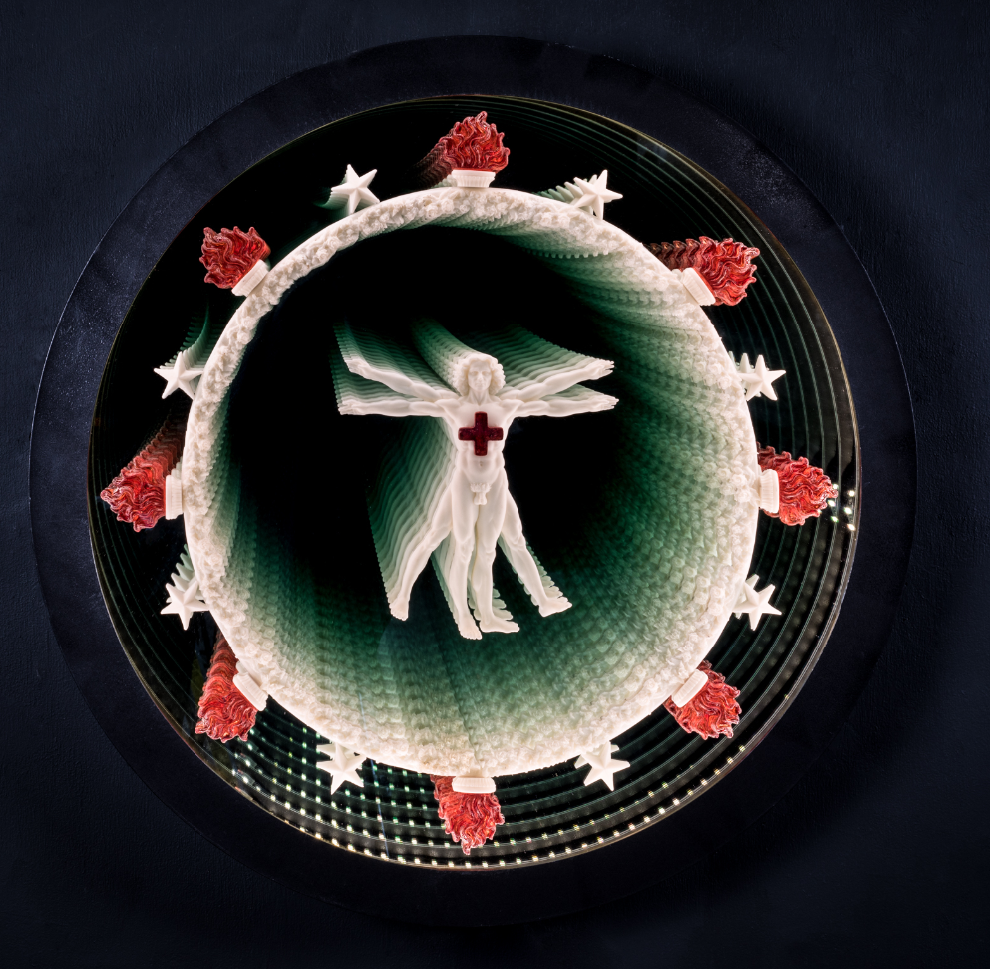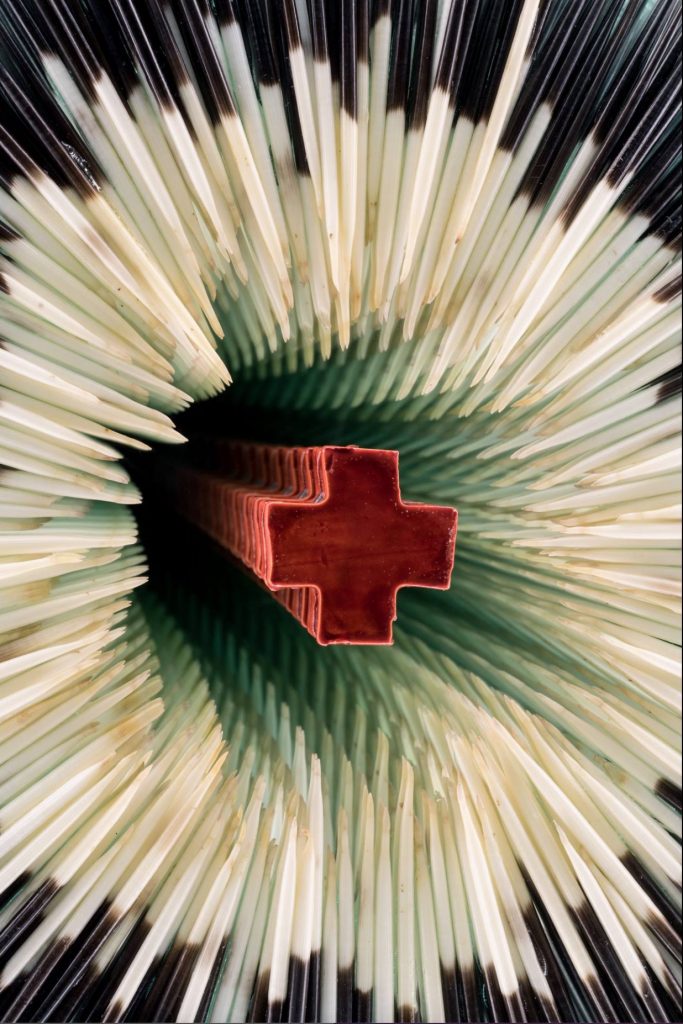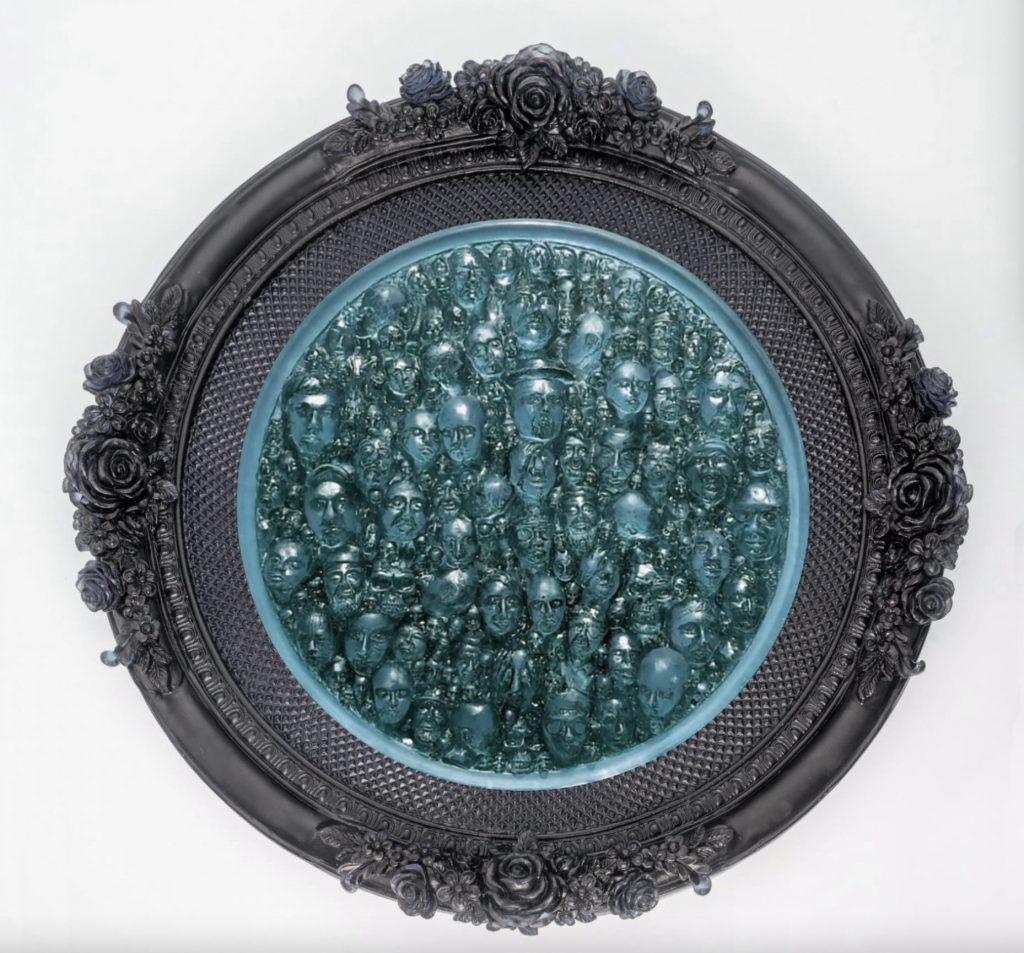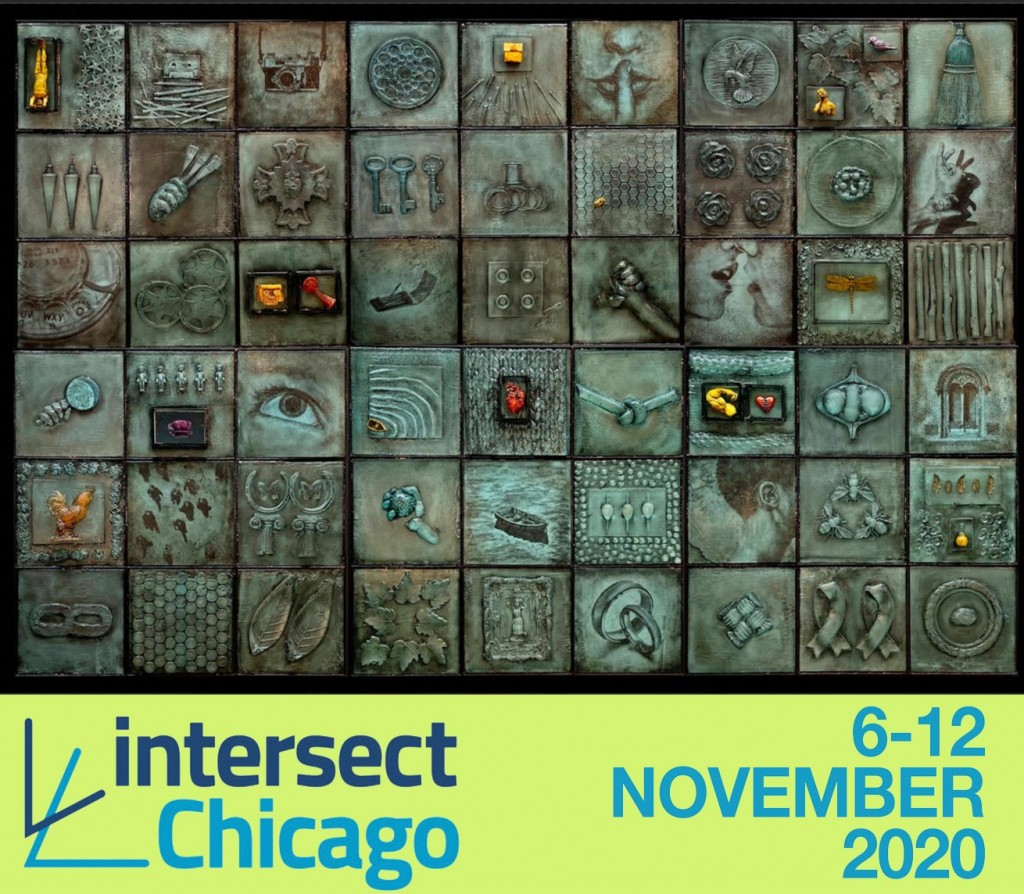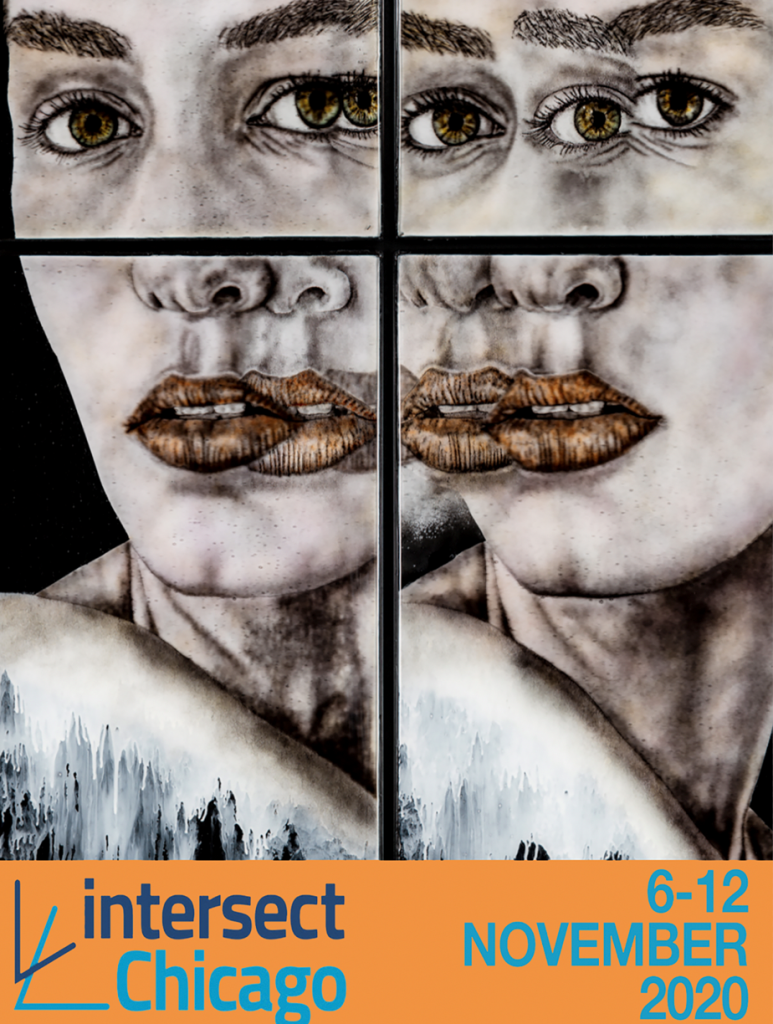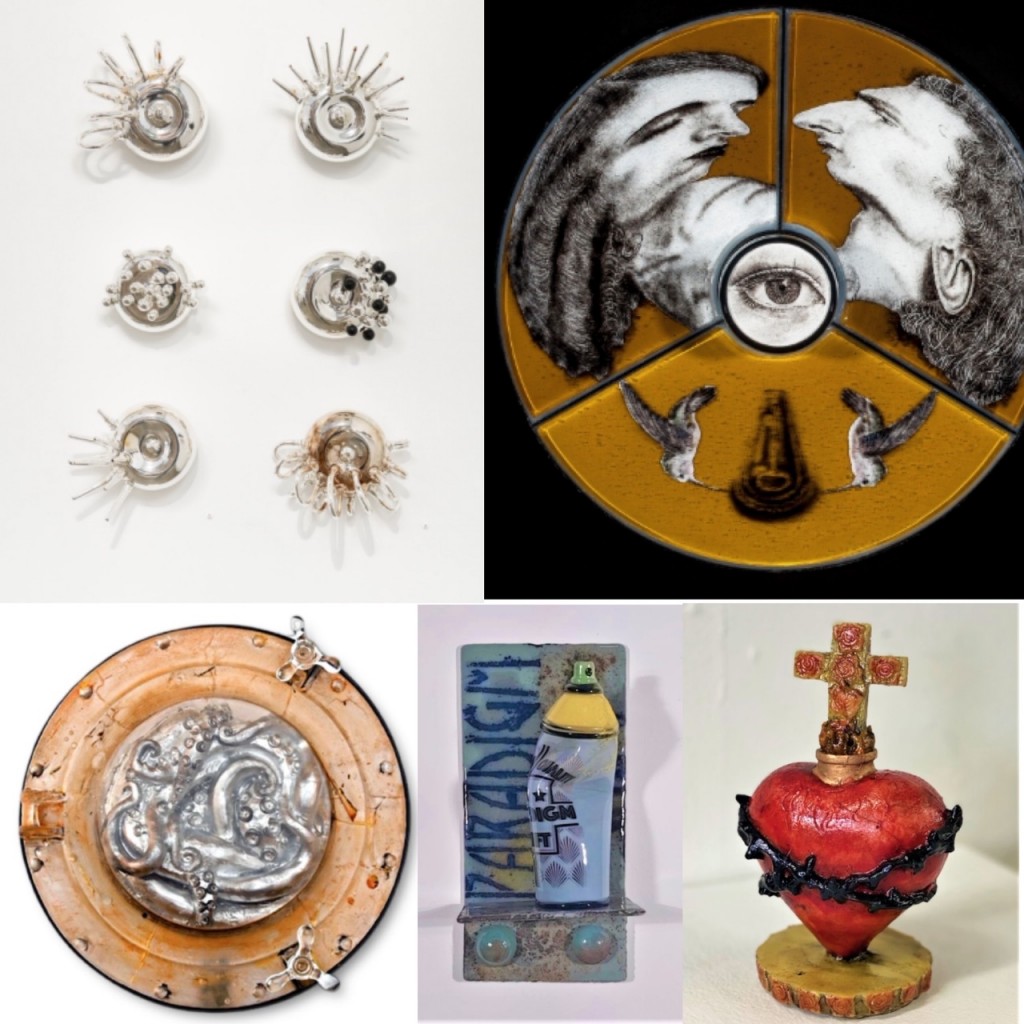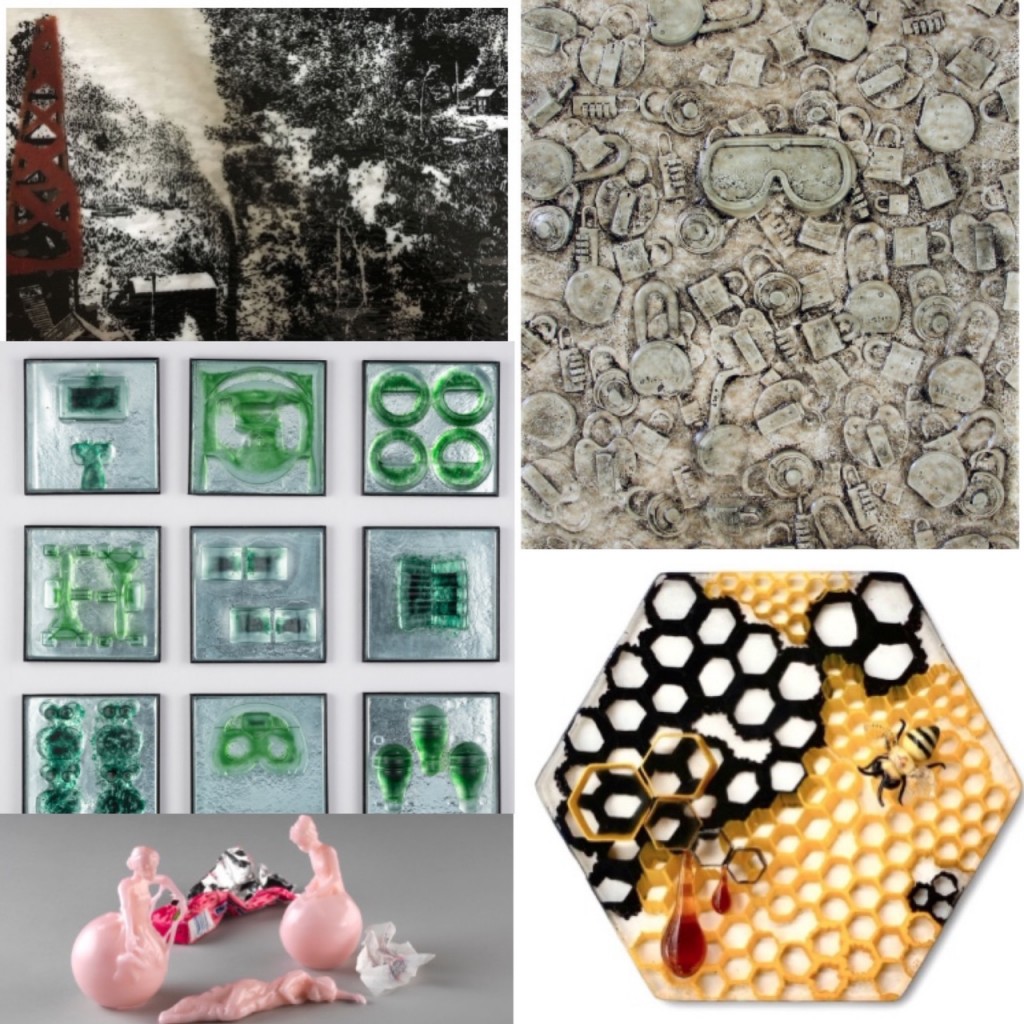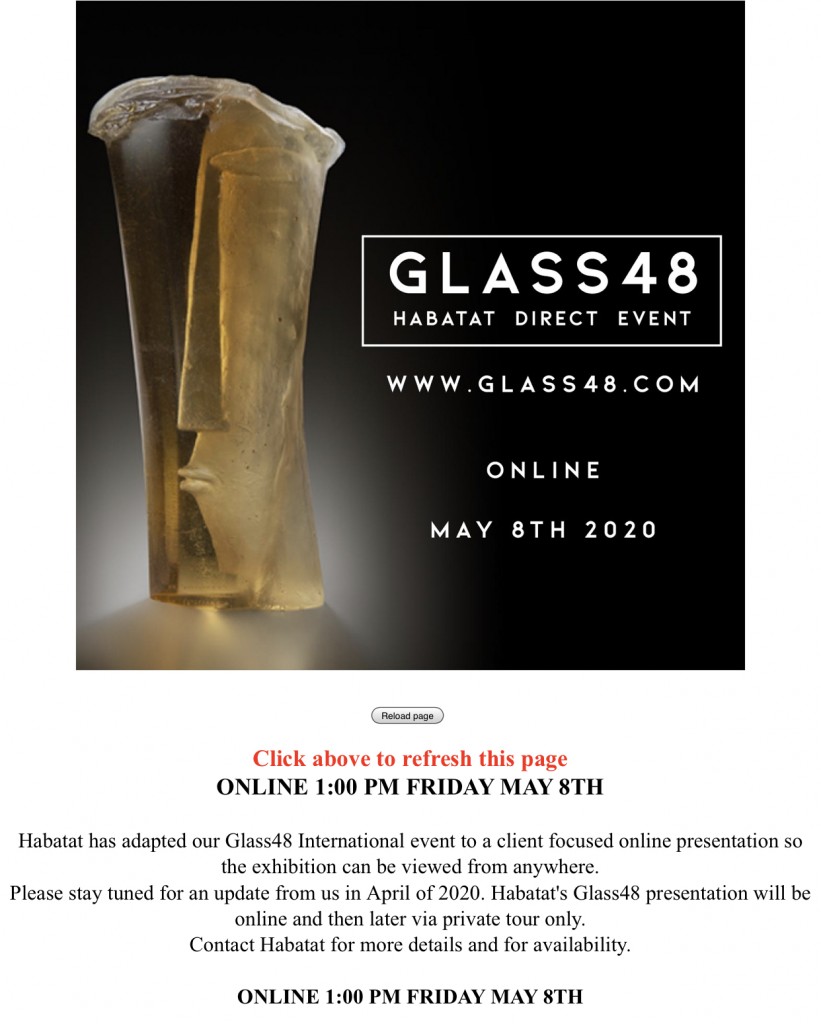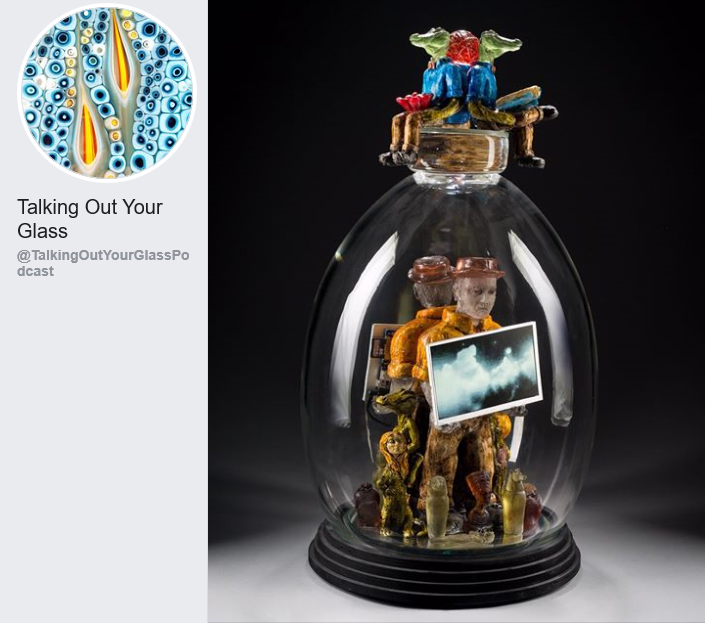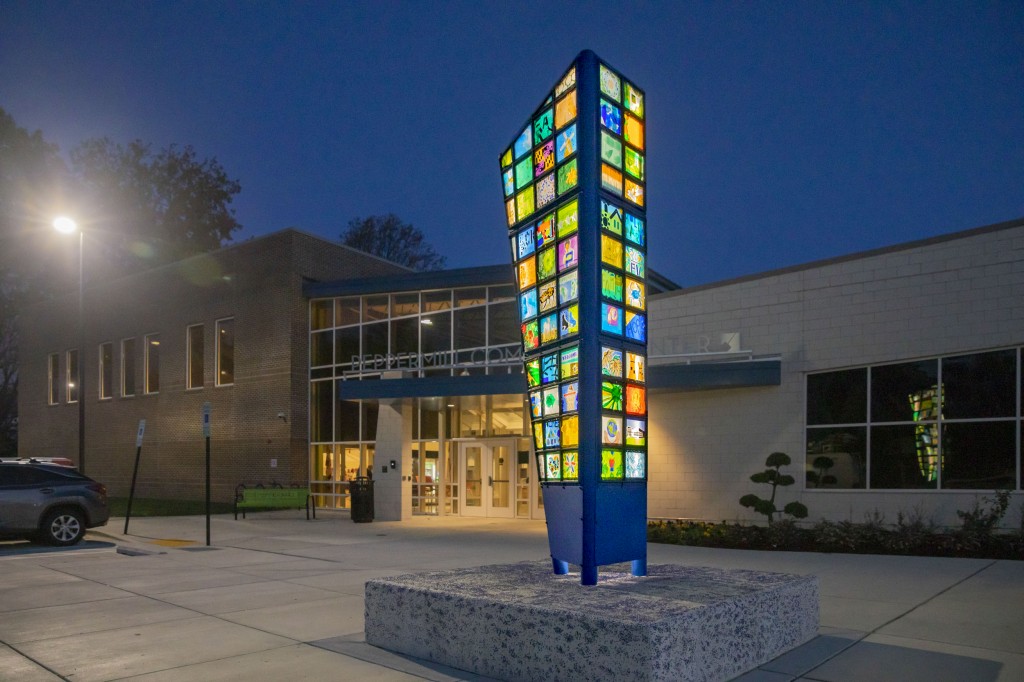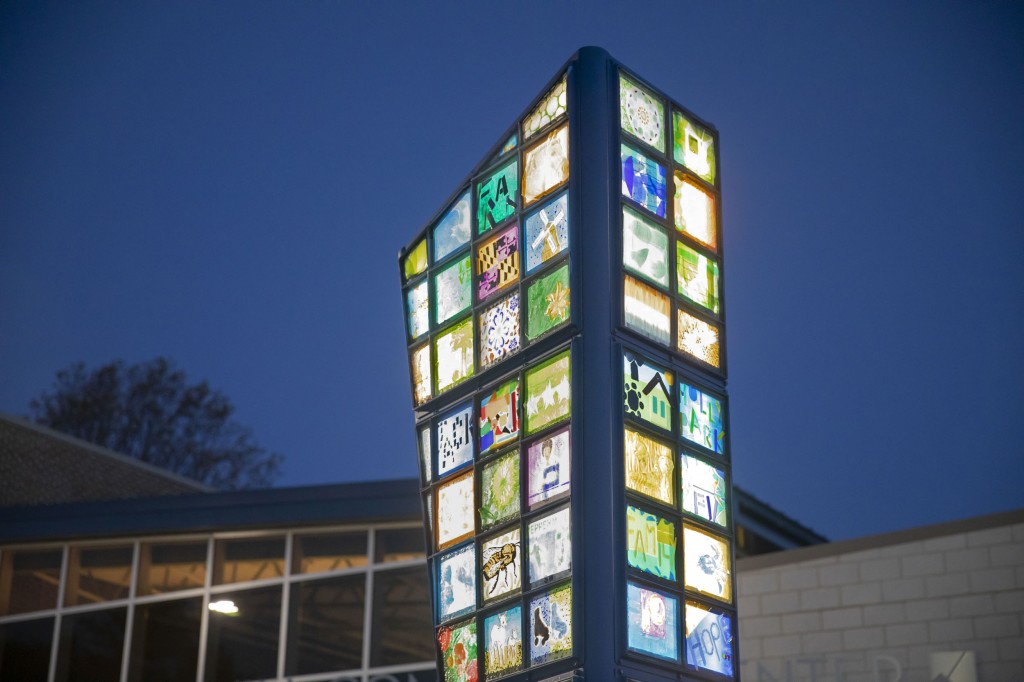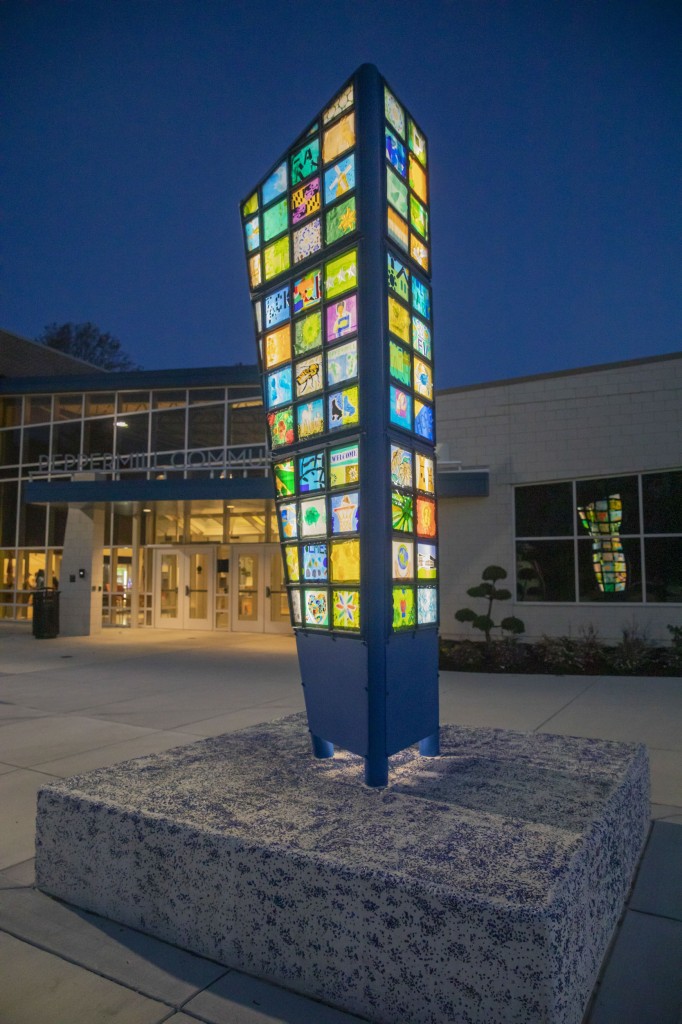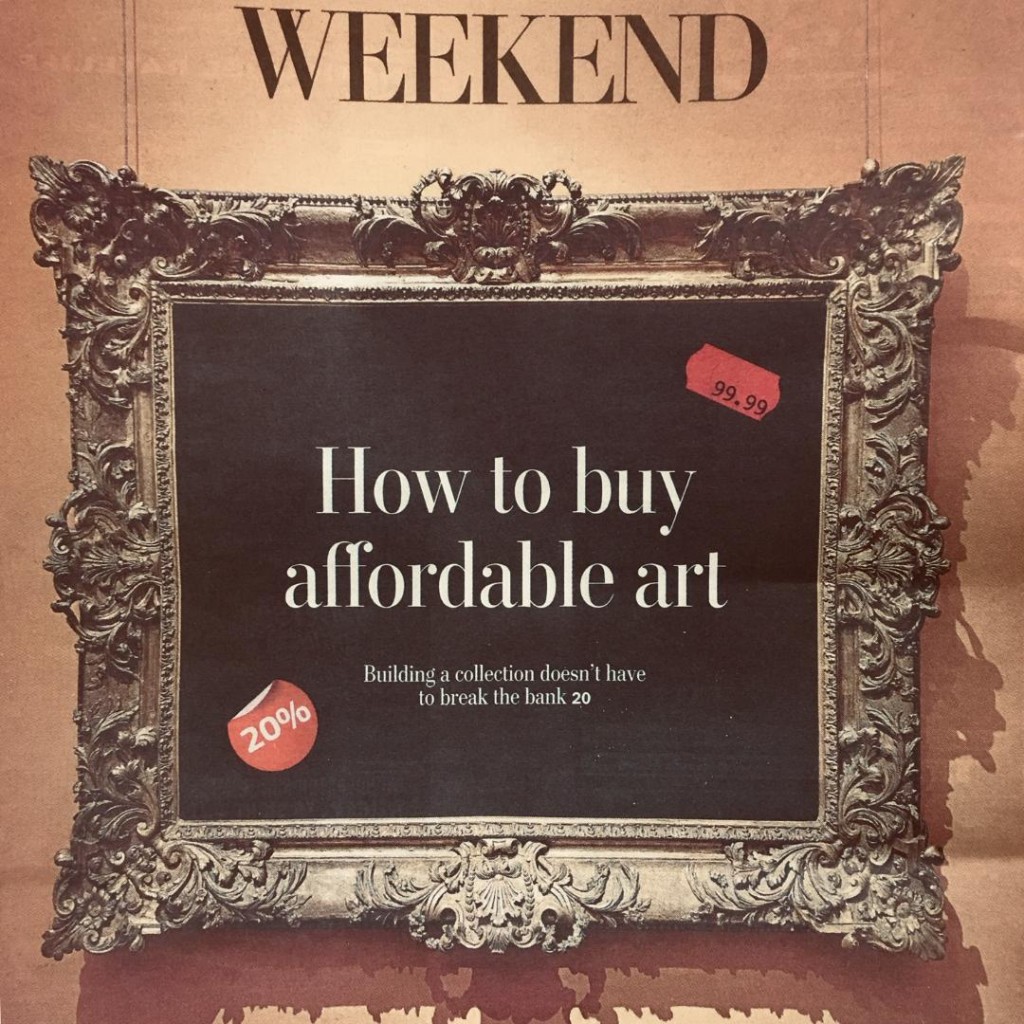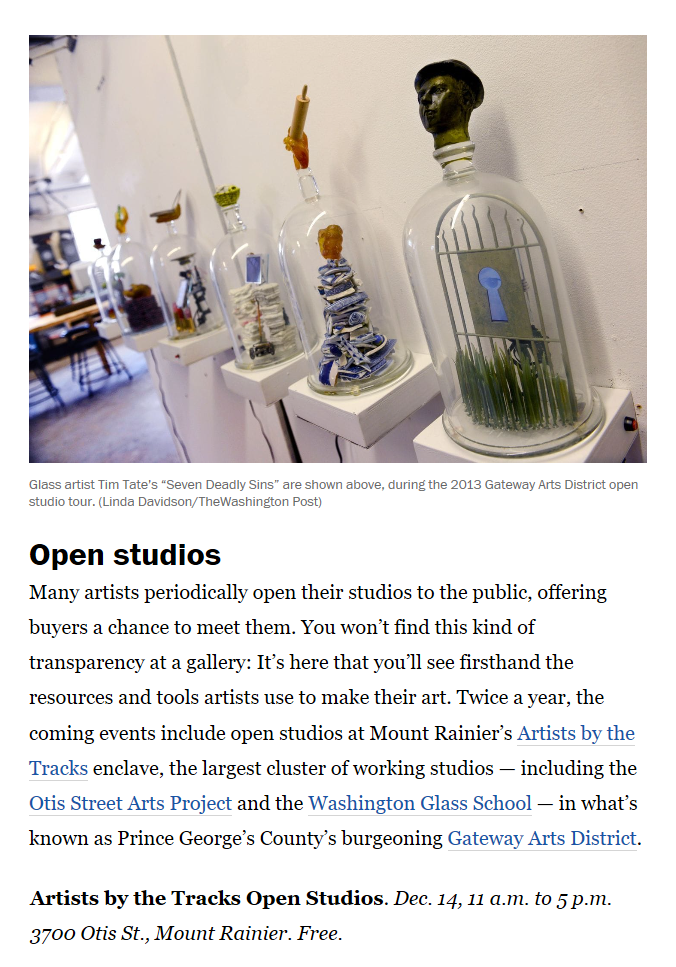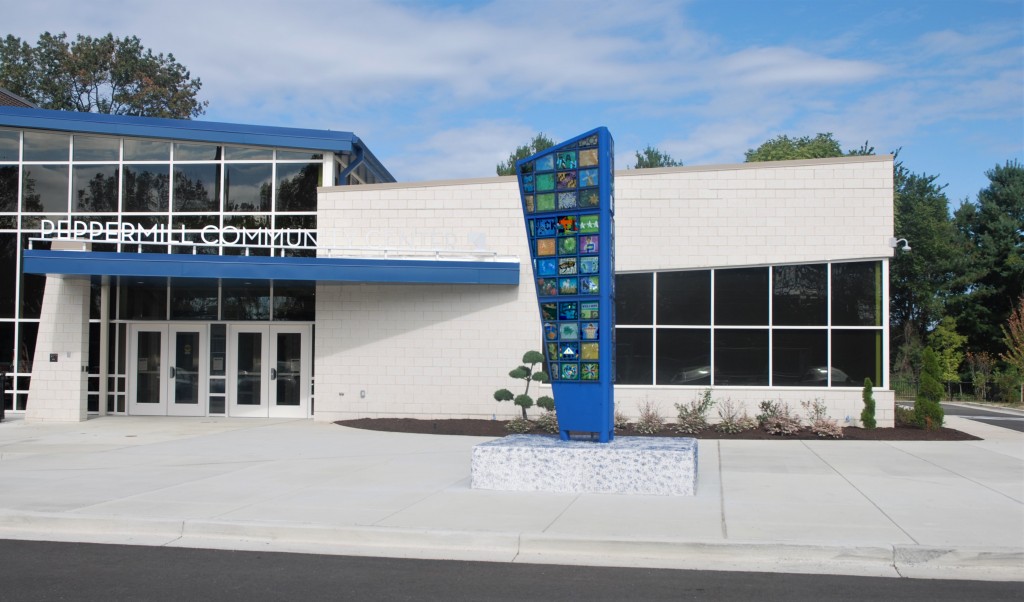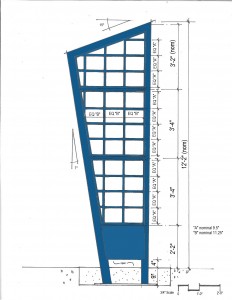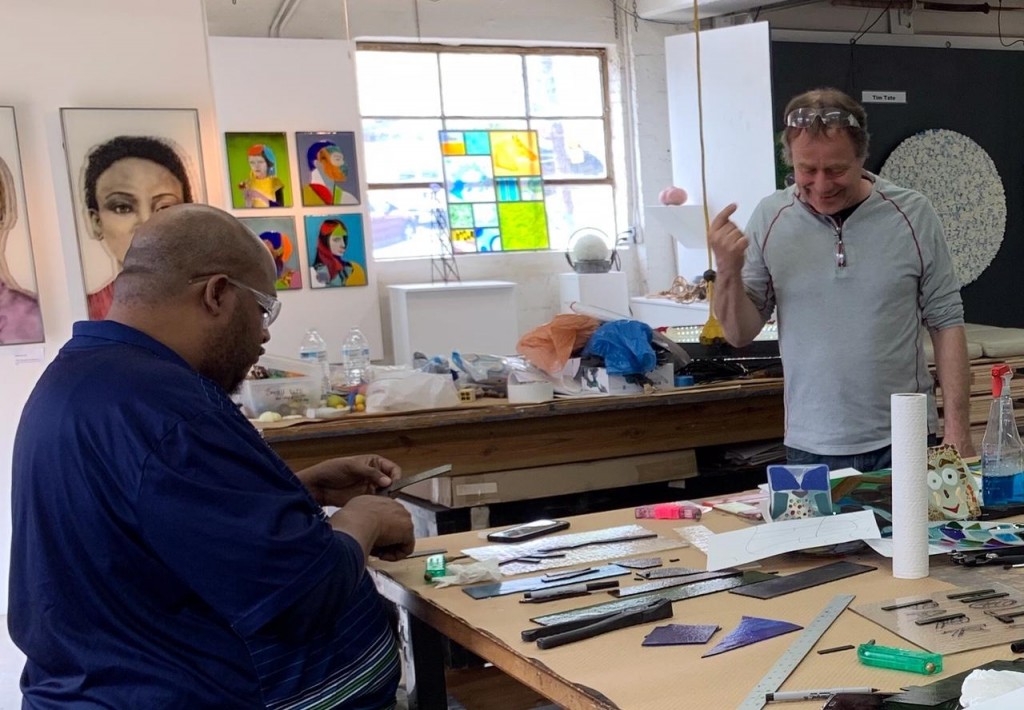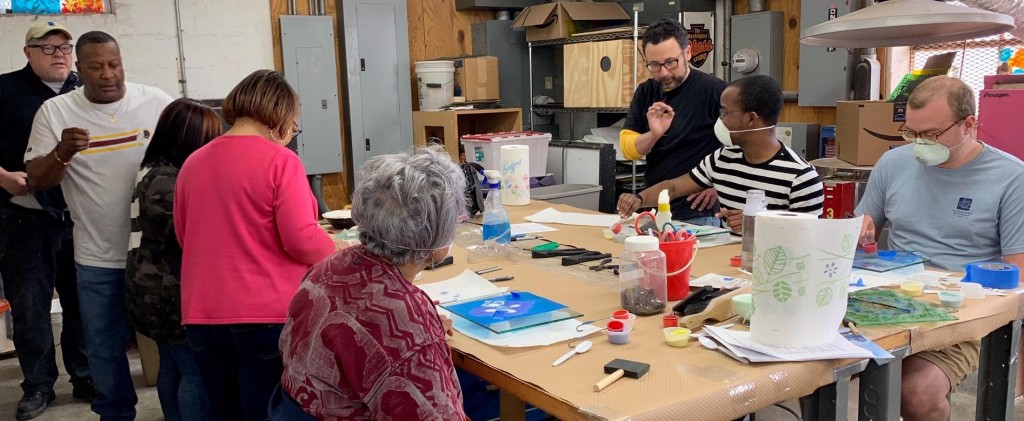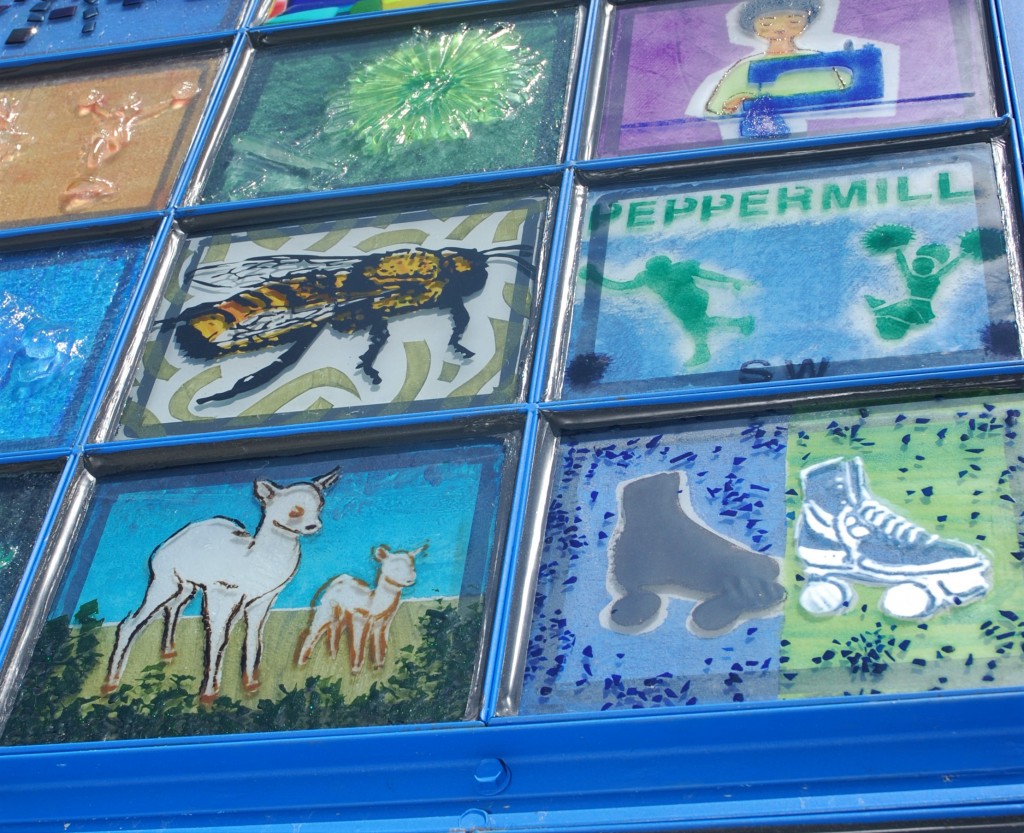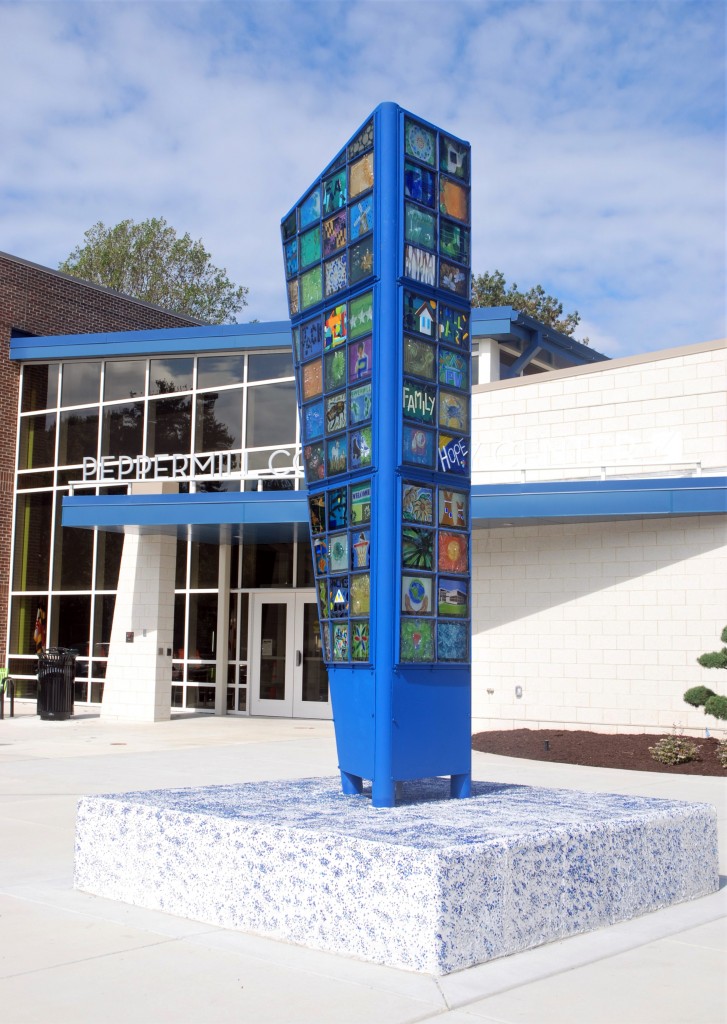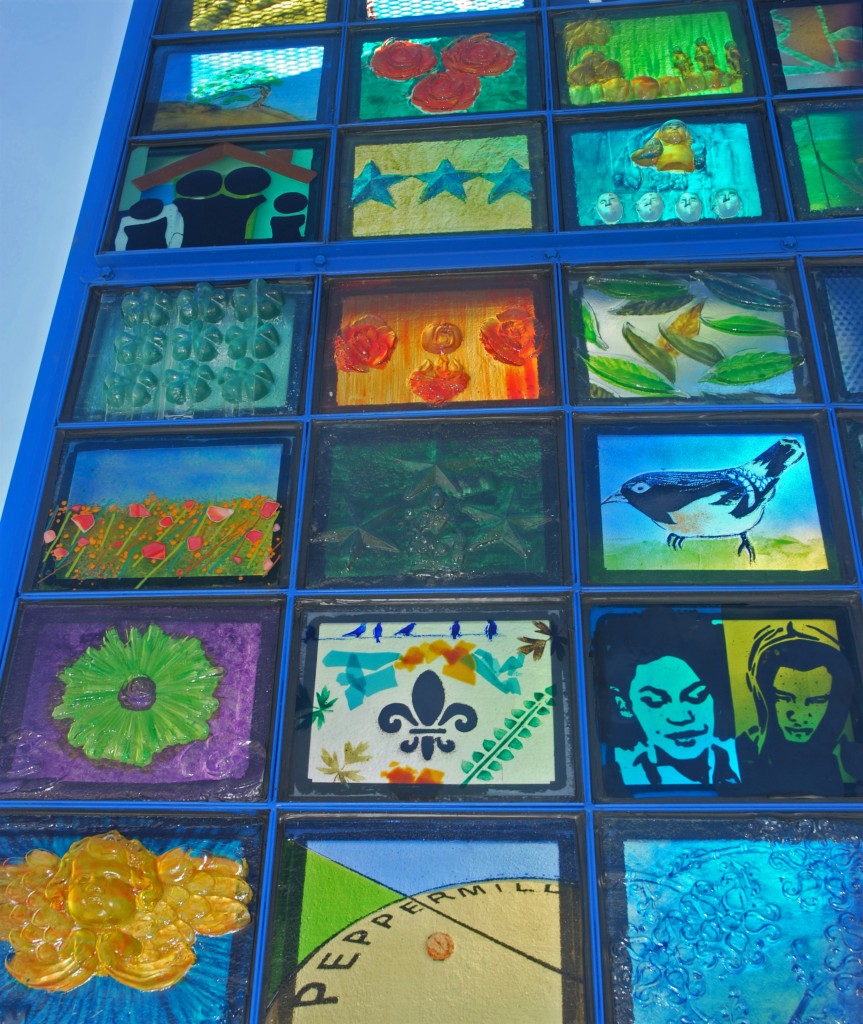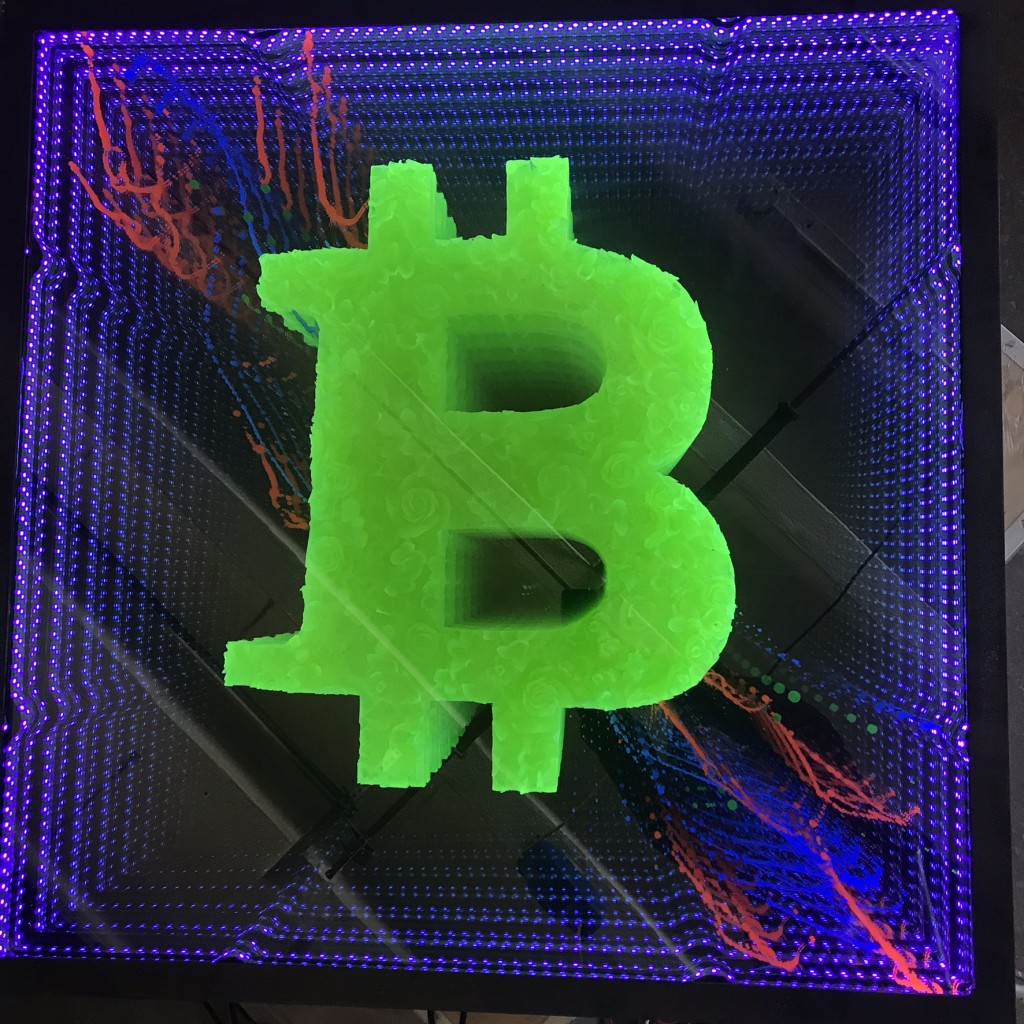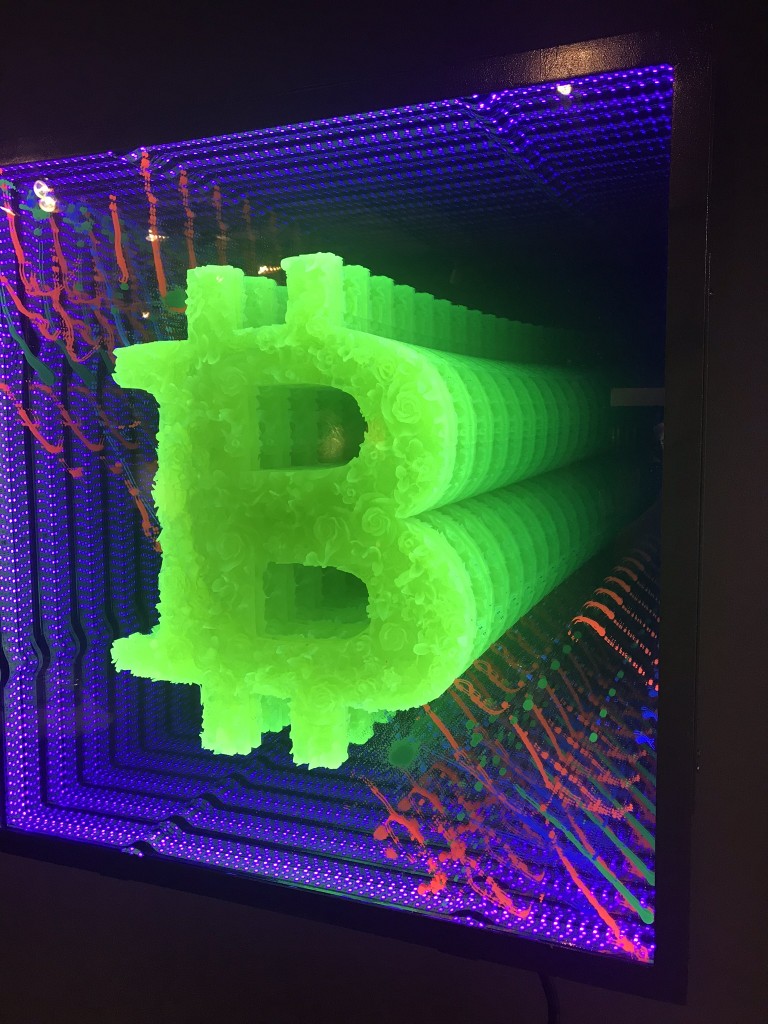In honor of Pride month, WGS is sharing Tim Tate’s essay on the early days of Queer Glass. In this post, we will share Tim’s writing and include many images of Tim’s work starting in the 90’s.
Tim Tate: Queer Glass
I’ve heard the term “Queer Glass” being used lately, which completely excites me! Meegan Coll’s “Transparency.” LGBTQ exhibit at the Liberty Museum last year, Jan Smith’s Bergstrom-Mahler Museum of Glass, Reflecting Perspectives: Artists Confront Social Issues of Diversity and Inclusion and Susie Silbert’s (Curator of Modern and Contemporary Glass at The Corning Museum of Glass) upcoming seminar discussion in October ( thank you Meegan and Susie!). This makes me want to cheer from the roof tops. Thank you to Meegan for curating that first show, and thank you to Susie for being the first institution to use the term Queer Glass.

One of Tim Tate’s earliest glass pieces from the mid 90’s. Said Tim of the work: “I lost 9 friends to AIDS in one year. This bowl with 9 angels covered by positive symbols was my tribute.”
One of the reasons I’m happy about this is that it gave me a reason to compile a history of my own Queer Glass, an excessive I had never undertaken. There are a few more reasons as well.
In 1990 I began taking glass classes at Penland School of Crafts. I went there to heal by creating. A few years earlier I received a terminal diagnosis: I was told that I had one year to live; I was a gay man who had AIDS. I embraced glass at that time so that I would at least die as the artist that I had wanted to be, rather than my former job…the job that everyone else thought that I should have.
In this 2-week class I met another gay man who was a very nice guy. I didn’t come out to him right away, as I was going to do it later that week. Before I could, however, this young man went to another well-known glass artists studio, covered the ground with newspapers, and fatally shot himself in the head.
I was not to meet another gay man in glass for the next 15 years.
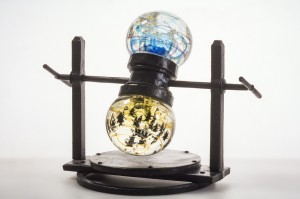
Tim Tate, “The Fulcrum of Heaven” , 24”h, forged steel and glass; 2002. Said Tim: “As an HIV+ gay man I was frequently told I was going to hell. I wasn’t as sure. You spun this piece to show which hereafter you were destined for. Angels in the blue, devils in the red. It sold to a preacher, which I somehow liked.”
I had no idea at that time just how scarce gay people were in the world of fine art glass. It was a hetero-normative art form. They are still scarce, though things are getting better. Frequently when I mention this fact to people, they start telling me the names of gay people they knew of (almost always the same 5 or 6 names). Comparing this list to the number of heterosexual glass artists is ridiculous. If anyone else was making direct queer work back then I would love to hear from you.
I had heard of several gay women artists, and eventually heard of a few gay men. Thank God for them! It always gave me hope. But being a gay person making glass sculpture does not mean that you make Queer Art. I believe Queer Art should address the concerns of gay people. They should be fighting issues that stand in our way towards equality. At least to me, they should also be identified as Queer Art… no “passing” allowed! I’m just happy that we live in a time when we can publicly embrace the word queer to re-empower ourselves.
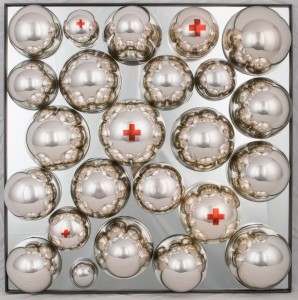
Tim Tate; “Positive Fractals” 36″ x 36″ x 6″;Blown Glass, Mirror, Silvering, Paint, Steel, 2002. Said Tim of this work: “I used these fractals to try to make sense of the HIV in my bloodstream and what it was doing to me.”
The queer issues then centered around HIV, marriage equality, violence towards gay men and women, all vast civil rights. Today’s issues seem to be centered around getting acceptance of family, civil rights (still), political advancement and keeping the extreme right at bay in order to keep the rights that we now have. So – as I waited to meet other queer men in glass, I made my art.
To be clear, there were other queer people making art…but not glass art. So, I began on my own. I never saw another piece of queer glass until the Liberty Museum’s “Transparency” show last year. What a delight to meet others embracing their self-identities for all to see!
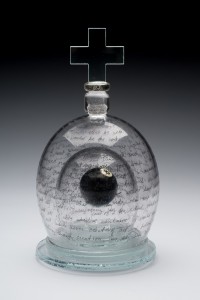
Tim Tate; “Two Paths Taken” ;Blown Glass, Found Objects, Original Text; 18″x10″x10″; 2004. Said Tim: “On the inner dome is the etched story of how my life changed after becoming HIV+. On the outer dome is my fantasy of what my life would have been like if things had been different. Both lives have their pros and cons. What I lost in one narrative I gained even more back in the second. The magic 8 ball in the center references the role that chance played in my life.”
The vast majority of my queer work goes back to 1992 to 1999, when I was the founder and director of the Triangle Artists Group (TAG) in Washington, DC…. which at one time boasted over 200 members who curated over 40 shows. Most notable was a show curated by Ruth Trevarrow entitled, “Too Queer”, which examined society’s homophobia and our own internalized homophobia. We worked with art and what was then called the “Prison Project” (concerning how gay people at that time were 3 times more likely to be incarcerated and 10 times more likely to be sexually abused in prison). AIDS Coalition to Unleash Power (ACT UP) played an important role among many TAG members. We were fighting to stay alive.
As such, this was the soup in which I swam. I was an HIV+ gay man surrounded by the politics and artistic expression of our times. I just never saw or experienced any queer glass art, other than my own. I saw the creation of this type of issue driven art as healing to me. Not only healing in the act of creating, but also healing for the viewers who shared these issues. Loss and healing became the main theme of many of my works. In one year alone, I went to 9 funerals. My friends, my partners… my world – was dying before my eyes. It was impossible for us to stay silent. HIV and Matthew Shepard’s death defined the late 90’s. Either a faceless disease or homophobic murderers were going to kill us. This seemed to be the worst time in the last century to be gay. The world’s queer artists united together – but not queer glass artists.
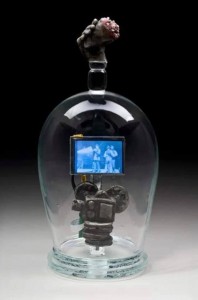
Tim Tate; “A Century Of Longing”; Blown & Cast Glass / electronics, original video; 16″ x 7″ x 7″; 2005. photo by Pete Duvall. The top finial is of a cast glass hand holding a Victorian bouquet. Inside there is a film projector and a stack of film. The video is an 1896 sound test by Edison. In it, two men dance for the first time in film history. A century has passed, and not only has the definitions of “New Media” changed (it begins with Edison’s films), but the way we perceive the 2 men dancing has changed as well. Edison was testing whether or not he could sync sound and motion at the time. These men have been dead for 50 years….but they dance on, oblivious that this 3 minutes would be remembered as iconic to a population they couldn’t have imagined. It was probably thought of as amusing back then, or convenient……but the way we perceive these 2 men has evolved so much over time that now it seems touching and sweet to think of them dancing for eternity together.
There was also a few gay glass collectors that existed. Unlike the fine art world, they rarely supported struggling queer glass artists (they still rarely do). Perhaps it was the old internalized homophobia rearing its ugly head again. One glass art gallery that I showed my work in said that I could make glass with a gay narrative, but they would not exhibit those works in the gallery. They said they had no clients for it. The economics were on the side of hetero-normity.
I was lucky in that I discovered that some many non-gay collectors would acquire my work, even queer work. The artwork just needed to be very good work as well. The glass and art collectors of the time were, for the most part, enlightened liberals. Museum curators were much more open to showing queer artwork. In the earliest days it was never about the economics anyway. It still isn’t. It’s about refusing to stay invisible. SILENCE = DEATH was the mantra for queer artists.
I assume that there were regional pockets of queer glass artists that I was just not aware of. I hope I was just not seeing a collective queer effort in glass. I saw work by queer glass artists, but nothing was in any way obvious. My point with my artwork was to escape the invisibility of being a gay glass artist at that time. Invisibility had to be left behind. I was eventually lucky enough to be asked to speak at Yale University by Glenn Adamson on the topic of Art and Conflict in a panel sponsored by the Chipstone Foundation.
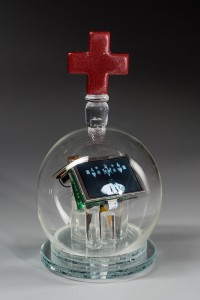
Tim Tate; “In The Dark Hours”; 16″ x 7″ x 7″; Blown and Cast Glass, Electronics, Video; 2006. Said Tim of this work: “In the early days of AIDS, there was a great deal of shame associated with contracting the disease. It felt like all control had been taken from your life, so many people took back the that control by committing suicide before the onset of symptoms. Suicide was the first thought I had when I discovered I was positive.” Photo by Pete Duvall.
So much has changed for gay people: HIV can now be controlled, we can now marry, and we have achieved some human rights. We have 10 openly gay men and women serving in Congress. We have a gay man running for president. Attitudes in the American public have improved drastically towards gay marriage. My fear is that we are becoming complacent with the gains that we have made. Anti-gay violence is on an alarming increase. The civil rights we have achieved are being eroded by the far right. This seems like the perfect time to focus again on queer art and defending what we have struggled for. I just thought I would gather that history here. Younger people than I will take it from here.
The [attached] images represent just a small portion of the works that I created during these last 30 years on this topic.
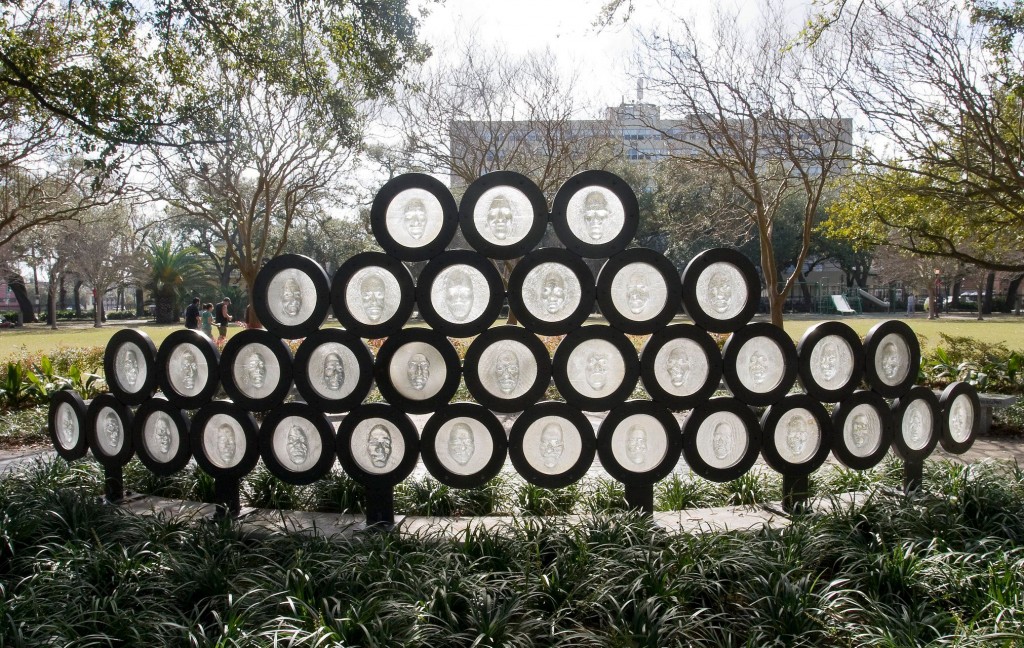
Said Tim Tate of this image of New Orlean’s AIDS Memorial – “The cornerstone of my Queer Glass Series is of course The New Orleans AIDS Memorial. I designed it in 1996 and my friend Mitchell Gaudet cast the glass when it finally got installed. This was one of the very first AIDS memorial sculptures in this country. It represents one of my proudest achievements as an artist. Thank you all who helped make it come to fruition. Its in Washington Park in the French Quarter.”
Tim Tate
June 3, 2019
